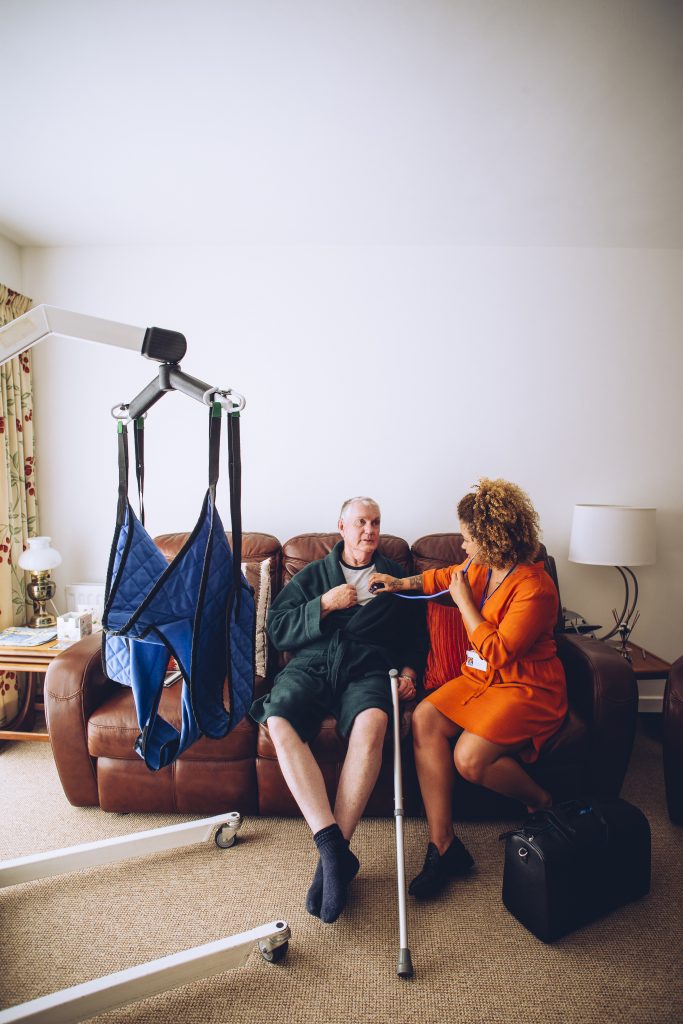A quick guide to ceiling hoists vs mobile hoists
Mobility hoists represent valuable tools to help transfer people with limited mobility from one place to another. Hoists are often available in care home settings and are commonly used to assist disabled or elderly people.
If you’re considering purchasing a mobility hoist for yourself or someone you care for, it is vital that you do a little research beforehand. There are many different brands and models on the market and two main hoist types: ceiling hoists and mobile hoists. It is also possible to purchase mobility scooter hoists to transfer people with personal vehicles.
Whether you need a hoist for home use or a care facility setting, you must check it has all features necessary to meet your requirements and avoid accidents.
To help make your task a little easier, therefore, we’ve put together a quick guide detailing the main differences between ceiling hoists and mobile hoists.
What factors should you consider before selecting a hoist?
Before selecting a disability hoist, you must consider the following factors:
- How heavy is the person you need to lift?
- Who will perform the hoisting?
- What manoeuvres will you need to perform?
- How limited are the physical abilities of the person who requires hoisting?
- How much space is there in the home or caring facility?
If you are unsure about the exact needs of the hoist user, it is worth consulting a professional therapist to help assess their physical abilities and perform a risk assessment.

Typically, mobile hoists are used in the first instance as they do not require installation and are relatively inexpensive. However, ceiling track hoists are often preferred as a long-term solution as they are easier to use and more aesthetically pleasing.
Ceiling hoists
A ceiling hoist is a motorised hoist device fitted to a track. This track is typically fitted to the ceiling and often extends to key areas of the home, including beds, baths, shower areas, chairs, tables and more.
There are several different types of ceiling hoist available, including:
- Room to room hoists that run throughout the whole building
- Straight track ceiling hoists that offer movement within a limited space
- X/Y track hoists that cover a room
When selecting a ceiling hoist for a disabled person, you must consider which areas of the home they most frequently need to move through.
What are the advantages of ceiling hoists?
There are several advantages to purchasing a ceiling hoist, including:
- They can be used to move someone through several rooms in a single transfer.
- The lifting range of a ceiling hoist tends to be greater than with a mobile hoist.
- No floor space is required, so they can be used in tight spaces.
- Typically, ceiling hoists come with features to make the transfer as smooth as possible. This could include weight mitigation technologies and anti-friction devices.
- Only one carer is needed for a transfer with a ceiling hoist.
- Mobile hoists tend to require two helpers.

What are the disadvantages of ceiling hoists?
The primary disadvantages of ceiling hoists include:
- They take a long time to install compared to mobile hoists, which can be used immediately.
- You may need to order remedial works before installation, such as electrical works.
- Ceiling hoists are fixed into position, restricting the areas you can move the hoist.
Mobile hoists
Mobile hoists are the more common type of hoist and are used in a wide range of settings, including hospitals, care homes, and private domestic spaces. They can be used to lift elderly or disabled people to beds, baths, or other areas of the home.
Key varieties of mobile hoist include:
- Foldable mobile hoist
- Electric mobile hoist
- Hydraulic mobile hoist
What are the advantages of mobile hoists?
There are many advantages to mobile hoists, including:
- They do not require installation.
- They can be used immediately.
- Foldable mobile hoists can be packed away when not in use.
- Mobile hoists can be used in different rooms and buildings.
- Some mobile hoists are so light and flexible that they can be used on days out.
What are the disadvantages of mobile hoists?
The main disadvantages of mobile hoists include:
- They often take up a lot of floor space and can be tricky to use in tight spaces. In this way, they are particularly unsuitable for buildings with narrow hallways or small rooms.
- Mobile hoists can be difficult to operate on thick carpets or uneven floors.
- It is not recommended that carers move people through different rooms in only one lift when using a mobile hoist.


